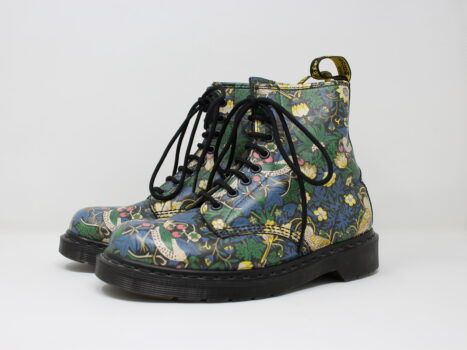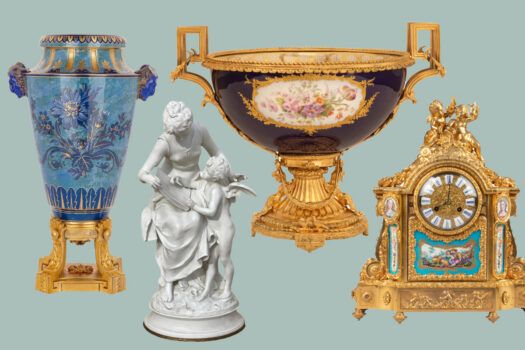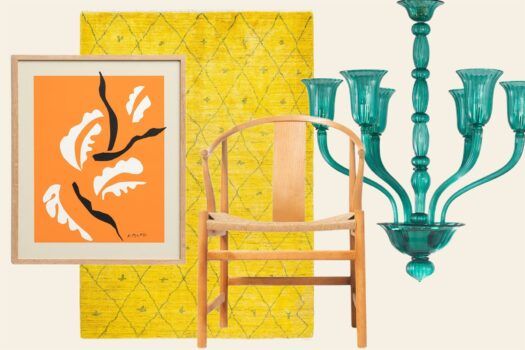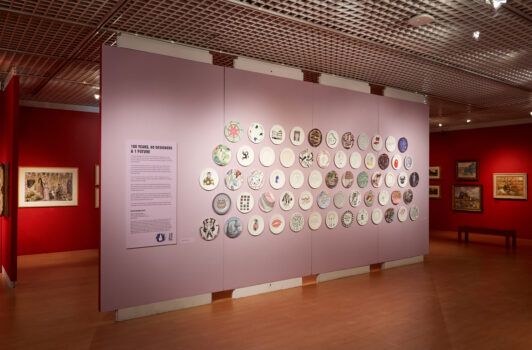
A chair may be categorized as design rather than art, but it can nonetheless have a meaning that transcends mere function. That’s a lesson from the Smithsonian’s National Museum of African American History and Culture, which is inaugurating its new Rhimes Family Foundation Visual Arts Gallery with a show of chairs and other objects that address themes of labor and leisure.

The ongoing exhibition, organized by museum curator Michelle Wilkinson, is titled “Reclaiming My Time,” a phrase associated with Congresswoman Maxine Waters that has come to mean taking back ownership of how you expend your energy and attention. That includes enjoying downtime. As Kevin Young, the director of the museum, noted in an announcement of the gallery’s debut, “Our resilience and rejuvenation depend on our ability to rest well.”

The exhibition is a rare showcase of African Americans in the design sphere, the significance of their work underscored by the presence of fine art in the same room. Among those represented on the walls are Amy Sherald, whose famous portrait of Michelle Obama is just part of her continuing exploration of the meaning of Blackness; Mickalene Thomas, whose portraits, in a variety of media, emphasize female power, beauty and sexuality; and Lorna Simpson, whose enigmatic conceptual works pose questions of identity through photos.


Furniture, the exhibition makes clear, can also explore identity. Consider the work of Jomo Tariku. Born in Kenya and raised in Ethiopia, he traveled to Kansas to attend MidAmerica Nazarene University. After transferring to the University of Kansas to study art, he discovered an affinity for industrial design. In recent years, the Virginia-based Tariku has become a design star with his Meedo chair, shaped like a bent Afro pick; his Ashanti stool, a reinterpretation of the thrones of Ashanti kings; his Nyala chair, its form based on the horns of the African mountain antelope; and his MeQuamya chair, inspired by the T-shaped staffs used by Ethiopian Orthodox clergy. The MeQuamya, chosen for the museum show, “invites you to meditate on the essentials of your life,” Tariku has said.


Chicago-born Stephen Burks trained at the Illinois Institute of Technology (Mies’s architecture school) and at Columbia University (where he now teaches), emerging as a diehard modernist. But he soon found himself seeking to supplement the mass production typical of that movement with elements of the handmade. The approach won him a National Design Award and commissions from important furniture manufacturers. His signature Grasso stools and armchairs for BD Barcelona feature painted steel frames and leather seats stuffed to overflowing. The Smithsonian is showing his Roche Bobois Traveler armchair, whose backrest supports a half-dome-shaped hood made of woven leather cords. As the first American designer for the French company, Burks was asked to explore ideas for furniture beyond the reach of European traditions.


Mark Grattan’s Loose Thread stool from 2021 expresses both strength and disarray. The version in the museum — a gift from the designer and New York gallerist Cristina Grajales — was chosen by curator Wilkinson in part because Grattan turned the fabric covering its steel frame inside out, giving it a particularly naturalistic mien. Grattan, an Ohio-raised woodworker and Pratt Institute graduate who divides his time between New York, Mexico and Brazil, is known for provocatively shaped pieces, including a dresser that splays out at the bottom like a mermaid’s tail.

Chicago-based maker Norman Teague named his contribution to the Smithsonian show, a rocking stool that resembles the torso of a hobby horse, Sinmi, a Yoruba word meaning “to relax.” But to sit on it is to confront instability. Teague, who grew up on the South Side of Chicago, spent 10 years at architecture firms where, he says, he was always a “token.” Now he is a teacher and mentor at the University of Illinois Chicago and a consultant to the Obama Presidential Center. Sinmi, made of plywood, has been compared to the work of important 20th-century designers who used the same material; Teague’s Africana collection, in contrast, employs wood in its natural state.

Sheila Bridges, a Philadelphia native who studied at Brown University and Parsons School of Design, is a renowned interior designer based in Harlem. Her narrative-rich rooms have attracted such clients as Bill Clinton and Kamala Harris. She is represented in the Smithsonian show by her now-classic Harlem Toile de Jouy. A grasscloth wallcovering introduced in 2006, it mimics French toiles of the late 1700s but with scenes of Black people at leisure that, she says, “lampoon stereotypes deeply woven into the African American experience.”
With these pieces plus others in the show and many more that could have been included, African American designers are recasting images of the Black experience, revising the notion of what African American design can be and, yes, reclaiming their time and their space.








